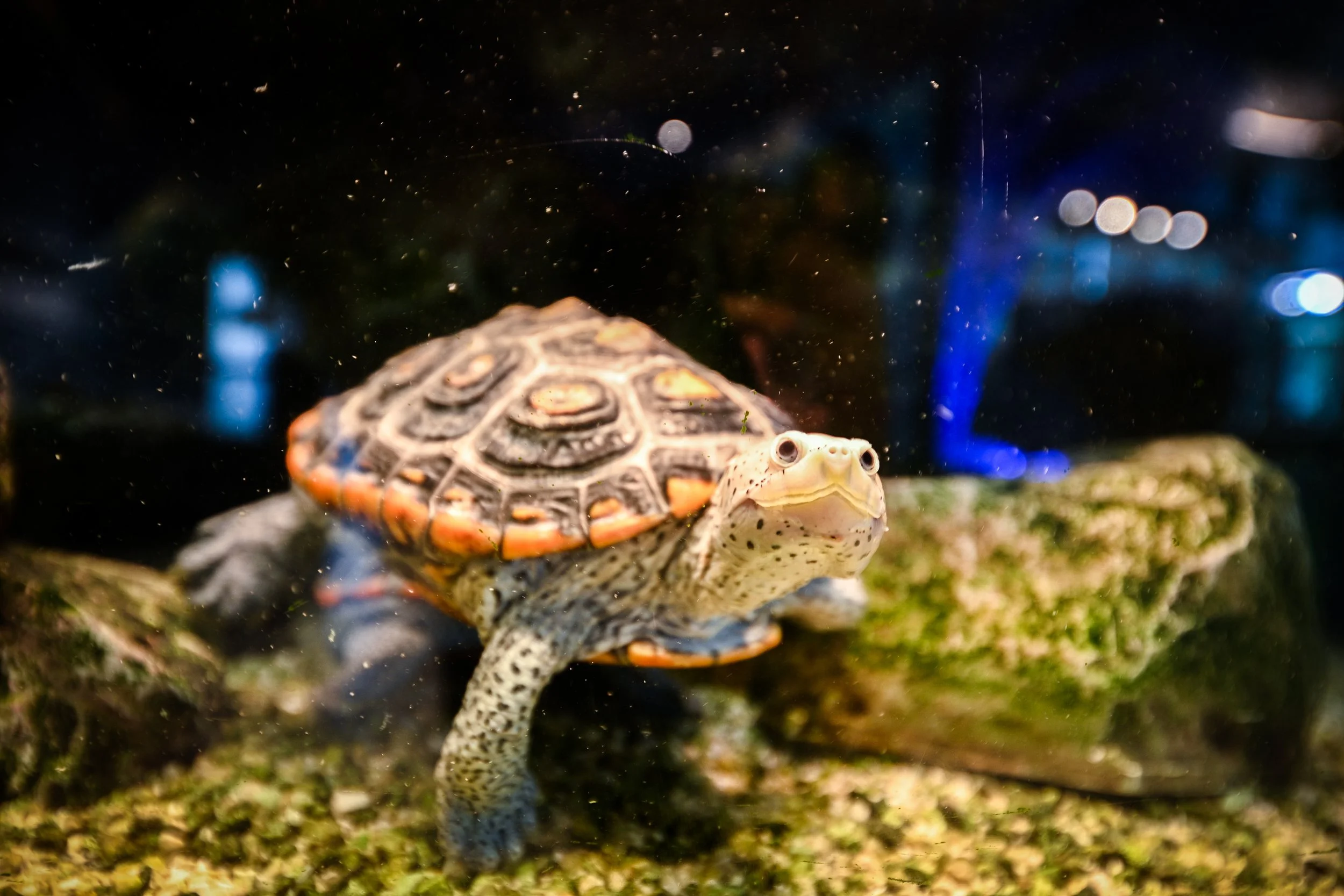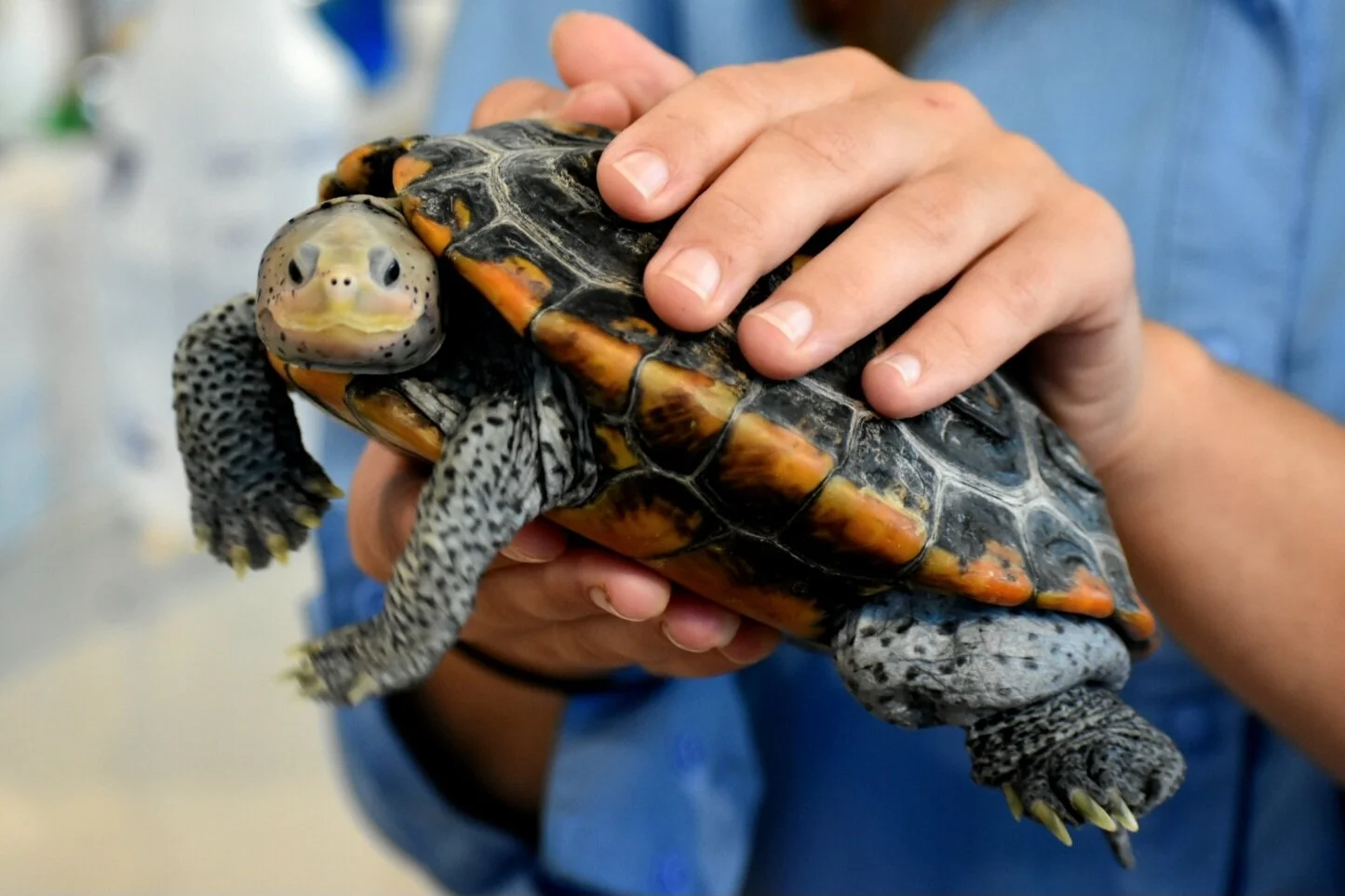Creature Feature: The Ornate Diamondback Terrapin of Tampa Bay
By: Paige W.Found along the brackish coastal waters of Tampa Bay, ornate diamondback terrapins (malaclemys terrapin macrospilota) are a visually striking species known for their pale white skin covered in unique black spots. Their dark shells feature scutes with patterns and grooves that form diamonds, each with a yellow or orange center. Similar to a zebra’s stripes, or a human’s fingerprints, each terrapin’s spotted pattern is unique.
Adaptations
These turtles are not just impressive to look at, however. Their anatomy is perfectly tailored to their environment. Ornate diamondback terrapins thrive in salt marshes, tidal estuaries, and mangrove habitats. Their large, webbed feet allow them to glide through the water— even in tidal currents.
Terrapins are also fierce predators, and their sharp beak and strong jaws allow them to crush prey such as mollusks, crustaceans, fish, and carrion. In addition to their ability to catch food, terrapins are also suited for finding fresh water, even in their brackish environment.
These turtles are able to obtain fresh water by catching falling rain in their open mouths, as well as by drinking from the layer of freshwater that has accumulated on top of the salt water. Terrapins also have specialized glands near their eyes that allow them to excrete excess salt, unlike most freshwater turtles.
Threats
Despite all of these adaptations that allow the diamondback terrapins to thrive in their natural environment, they are considered a vulnerable species. Terrapin populations are greatly decreasing due to threats such as destruction of natural habitat, development, pollution, climate change, and commercial harvesting. Crab traps also pose a significant threat to terrapins, as the turtles enter the traps looking for a meal, and drown upon not being able to escape.
Conservation Efforts
Tampa Bay Watch and their two ambassador terrapins, Ruby and Bertha, are making an impact through education. At the Tampa Bay Watch Discovery Center, visitors can learn about by catch reduction devices that can be used on crab traps to reduce the unintentional capture of non-targeted species like the diamondback terrapin. The public are also able to come face-to-face with Ruby and Bertha, watch them eat salmon and shrimp, and learn about this incredible species and the importance of protecting them. You can help protect this incredible species by supporting local conservation efforts, or by visiting the Tampa Bay Watch Discovery Center to learn more.


